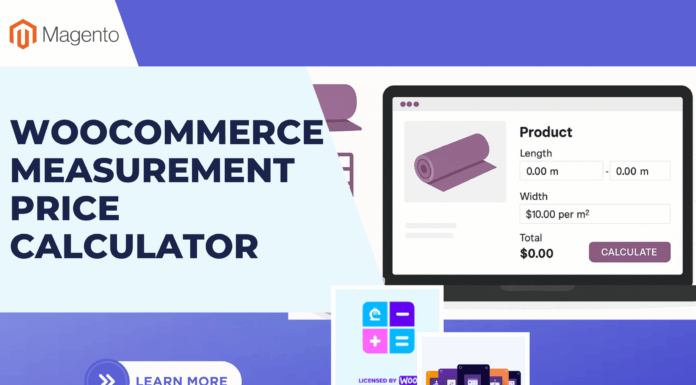
WooCommerce and Magento stand out for their unique strengths and capabilities. Both platforms cater to diverse business needs. However, they differ in terms of architecture, features, scalability, and ease of use.
Whether you are a small business seeking simplicity or a large enterprise requiring scalability, understanding the distinctions between WooCommerce and Magento is essential for making an informed choice.
Delve into this comprehensive factor-based comparison to determine among both platforms which one best suits your eCommerce website development needs.
Table of Contents
WooCommerce vs Magento: How they are different from each other?
First of all, let’s take a glance at the comparison table and grab the key differences between the top-notch e-commerce platforms:
| Aspects | WooCommerce | Magento |
| Platform type | WordPress plugin | Standalone eCommerce platform |
| Ease of use | Beginner-friendly | Requires technical expertise, especially for complex configurations |
| Scalability | Generally suitable for small to medium-sized stores | Known for high scalability, Magento is capable of handling large-scale eCommerce stores |
| Cost | Often more cost-effective | Can be expensive, especially for large stores |
| Customization | Easy to manage and customize, but requires coding for advanced features | Highly customizable but requires development expertise |
| Community support | Large community due to WordPress integration | Active community, especially in enterprise space |
| Hosting | Compatible with various hosting providers | Often requires dedicated or cloud hosting |
The comprehensive comparison between WooCommerce vs Magento
In detail, we’ll break down several points to help you finf the best fit your for e-commerce business in a snap.
#1. Pricing
WooCommerce and Magento both have distinct approaches to cost. Let’s see them.
WooCommerce
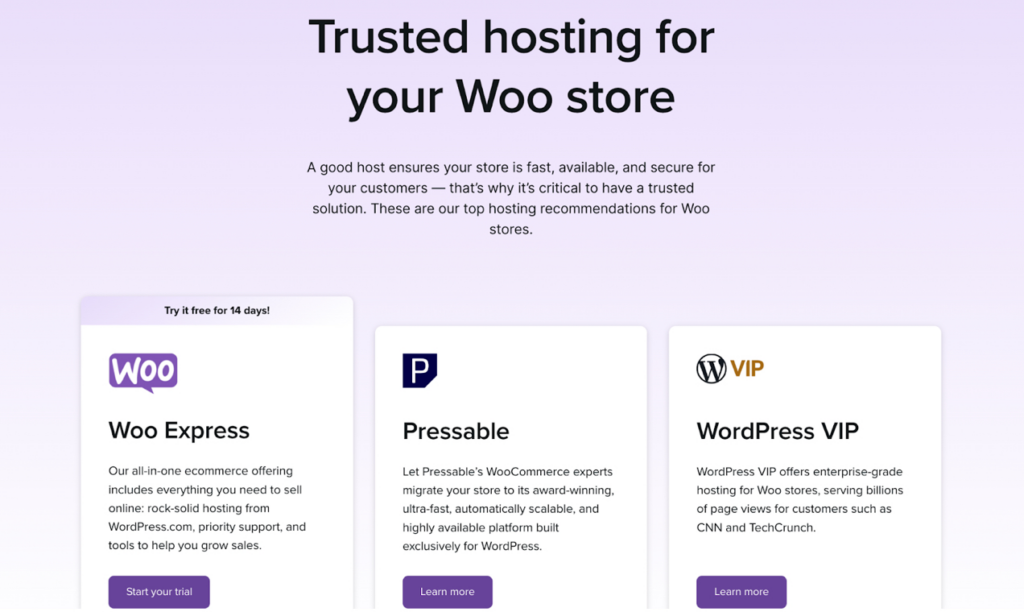
- Core software cost – Being a WordPress plugin, WooCommerce is free to use. This makes it a perfect choice for SMEs looking for a cost-effective solution.
- Themes and extensions cost – While the core software is free, businesses may incur costs when opting for premium WooCommerce themes and extensions.
- Hosting and domain name cost – WooCommerce allows users to choose their hosting provider. Here the cost will depend on the hosting plan selected.
Magento
- Magento open source (formerly Magento Community) – This edition is free to use. It lets businesses build a customized store without an initial licensing fee.
- Magento Commerce (formerly Enterprise) – This Magento edition comes with a cost but provides additional features, like cloud hosting and advanced analytics. Magento Commerce can be your way to go if you are a larger enterprise with advanced needs.
Winner: It depends on the business’s specific needs and budget considerations. Though both are open-source, there is not a clear winner here.
#2. Ease of use
WooCommerce
It is a beginner-friendly platform and a suitable choice for users without any prior eCommerce website development experience. WooCommerce development has a simple installation process, but since it is a WordPress plugin, you first need to install WP and then WooCommerce.
After installing WordPress, one can navigate to dashboard > Plugins > WooCommerce, and then the platform will guide you through a setup wizard.
Nevertheless, while the initial setup is simple, complexity rises during customization and
Integration of third-party elements. In such scenarios, if someone faces difficulty in handling the platform intricacies, they can hire eCommerce developers with proficiency in WooCommerce to cater to their requirements.
Magento

Magento is geared toward developers and demands a high level of technical expertise. Novice programmers or anyone unfamiliar with eCommerce website development will find Magento complex to start.
As a business owner, if you lack coding experience, opting to develop a Magento website on your own can be challenging and time-consuming. It will be better to outsource the project to an experienced Magento development company to get a website that looks and works great.
Winner: In terms of user-friendliness, WooCommerce takes the stage.
#3. Customization
WooCommerce
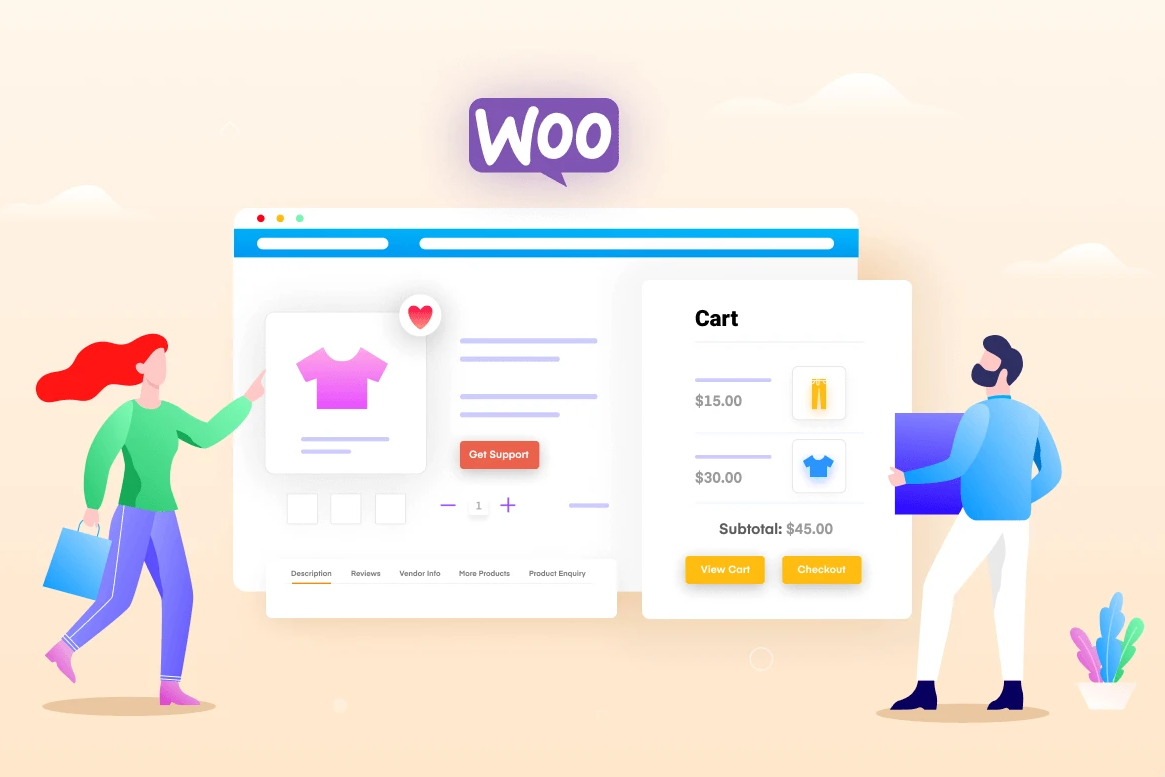
WooCommerce comes with a straightforward way to customize a theme. Navigate to Dashboard > Advanced > Editor, and alter your site’s layout.
Also, WooCommerce brings a straightforward way to customize a theme and integrate additional functionalities through plugins, such as the File Uploader for WooCommerce, which allows store owners to easily handle file uploads for products.
Alternatively, a store owner can use WooCommerce’s page builder feature to design a specific page’s layout as they want. But for more complex customization needs, you will be required to hire a WooCommerce developer. Leveraging recruiting email templates can significantly streamline this crucial proces
Magento
Magento offers a high level of customization but is not as simple as WooCommerce. The platform has a vast marketplace of extensions to add specific functionalities. Its modular architecture allows users to customize various aspects of their online store, from the appearance to the functionality.
But yes, it demands proficiency as it is not a platform for beginners, especially for handling customization needs. Nevertheless, if the store owners hire a proficient Magento developer, it will be seamless to make modifications in their Magento store.
Winner: For moderate customization requirements with easier management, WooCommerce is the winner. Otherwise, for complex customization needs, it is ideal to go with Magento.
#4. Scalability
WooCommerce
Though WooCommerce is scalable, it is not very suitable to manage high-traffic online stores. It relies on WordPress’s infrastructure and may require additional server resources and performance optimization to handle high-traffic spikes.
Businesses with moderate website expansion needs can choose WooCommerce for developing their eCommerce site.
Magento

Magento has robust architecture, designed with scalability in mind. It can efficiently handle extensive product catalogs and high transaction volumes. Enterprises experiencing rapid growth will find Magento well-suited for their growing business needs.
While Magento is robust and scalable, online stores developed using it may experience slow website loading issues. The platform requires proper optimization to achieve high performance.
Winner: Magento is the clear winner in terms of scalability. It is ideal for large-scale and enterprise-level eCommerce operations.
#5. Security
WooCommerce
The security of WooCommerce is closely tied to the overall security measures implemented on the WordPress platform. It supports SSL encryption for secure data transmission. This ensures sensitive information (like customer payment details) is encrypted during online transactions.
However, as WooCommerce relies on plugins to extend the site’s functionality, the overall system’s security depends on the security of the tools used. This, in turn, requires businesses to be cautious in selecting plugins to minimize potential vulnerabilities.
Magento
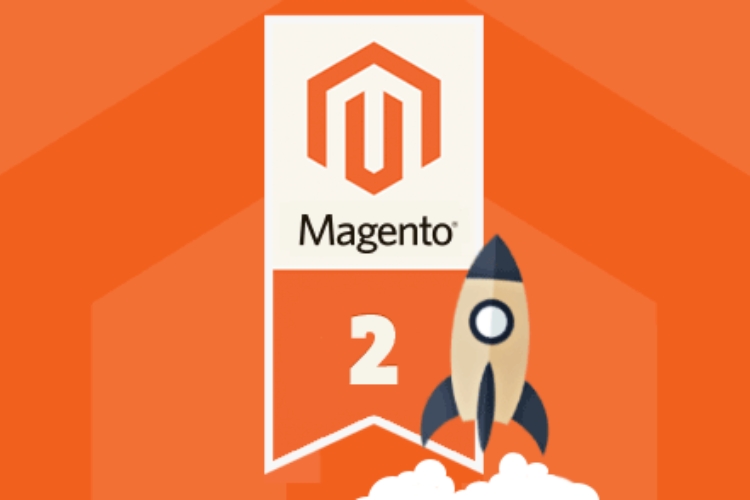
Magento comes with built-in security features like data encryption and secure payment gateways. It contributes to a robust defense against potential cyber threats. The platform has a dedicated security team that monitors and identifies potential vulnerabilities. They release regular security patches and updates to newly discovered threats.
Here are the key security features of Magento:
- Transactions adhere to the Payment Card Industry Data Security Standard (PCI DSS). It ensures the secure handling of customer payment data.
- SSL encryption for secure data transmission between the customer’s browser and the server.
- Two-factor authentication to enhance user’s account security.
Winner: It is a tie! Both WooCommerce and Magento are focused on keeping their platform secure.
#6. Speed and performance
WooCommerce

While WooCommerce itself provides features for caching and optimization, its performance can vary based on the chosen hosting provider and the complexity of the website. For small online stores with less traffic, WooCommerce’s performance will be satisfactory. However, for larger enterprises on high-traffic sites, advanced optimization practices and caching mechanisms are required to obtain optimal speed.
Magento
Magento incorporates full-page caching and also supports the integration of Varnish Cache. It offers database sharding for efficient load distribution. These features contribute to faster page load times and improve overall site performance.
While Magento’s architecture is suitable for large and complex online stores, assessing its performance can be complex. It is because of the various influencing factors like content delivery network (CDN) implementation, server configuration, installed plugins, and others.
Winner: There is no clear winner here! Both platforms can be optimized for speed but Magento has an edge in handling the performance demands of larger and more intricate eCommerce stores. However, it still depends on various aspects, like image optimization, plugins and modules used, and the quality of web hosting.
#7. Payment options
WooCommerce
WooCommerce supports numerous payment gateways, including popular ones like PayPal, Stripe, Square, and many others. Beyond this, there is availability of various extensions by which store owners can integrate additional payment options as per needs.
Magento

Like WooCommerce, Magento also supports a wide range of payment gateways, including major ones like PayPal, Stripe, Braintree, and Authorize.net. Moreover, the platform handles multiple currencies, making it suitable to handle global business operations.
Winner: It’s a tie!
#8. Support
WooCommerce
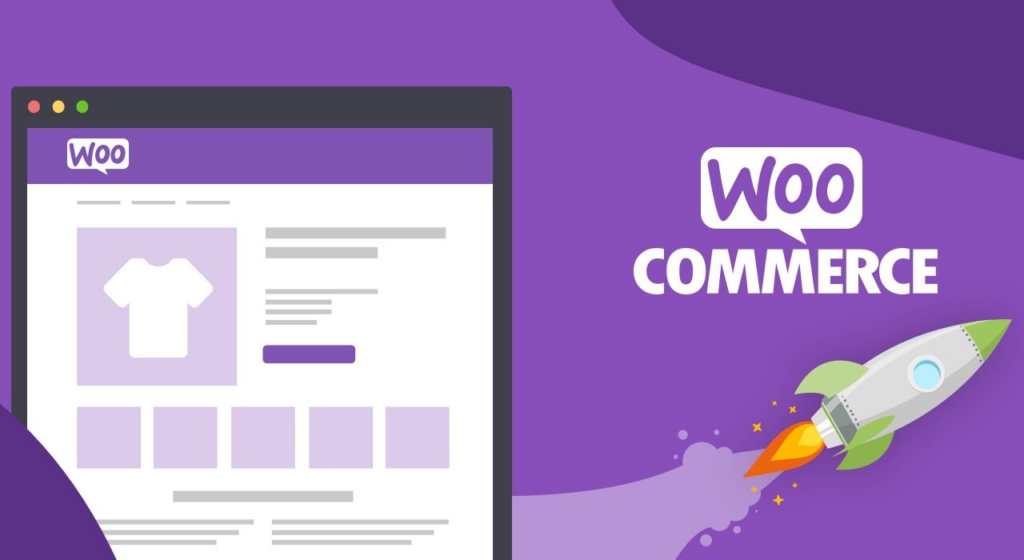
Since the platform is integrated with WordPress, WooCommerce has a large and active user community base. It majorly benefits from WordPress developers who can provide support for both general and technical issues. Moreover, its official documentation is extensive and covers a wide range of topics, like basic setup and customization.
Magento
Beyond official documentation, Magento also offers live and email support features. Businesses using Magento Commerce (Enterprise version) have access to additional support resources, including technical support, and assistance with platform optimization.
Winner: WooCommerce covers has a high market, and thus, provides multiple resources to help its users. In contrast, Magento has less market share, and therefore not such a widespread community. But it still has enough resources to help Magento store owners and developers.
Conclusion
After this detailed comparison, some of you prefer WooCommerce, and the rest will choose Magento. Being a WordPress plugin, WooCommerce appeals to those seeking a user-friendly and flexible solution. Conversely, Magento usually caters to enterprises and businesses with complex eCommerce website development needs. As a result, the winner in 2024 – WooCommerce vs Magento – is totally depended on your needs.
Author bio
Nathan Smith is an experienced web and app developer, currently working with TechnoScore- a leading eCommerce development company. As a technology enthusiast, he is passionate about sharing his web and application development knowledge through his articles. Nathan keeps himself up-to-date with all the latest trends, innovations, and disruptions happening in and around the IT industry. He is also keen on sharing his ideas and understanding of the innovations in the IT domain with individuals and entrepreneurs interested in the trade












![[SALE OFF] Discount 30% All Premium Extensions On Christmas And New Year 2025 christmas-and-new-year-2025](https://landofcoder.b-cdn.net/wp-content/uploads/2024/12/christmas-and-new-year-2025-1-218x150.png)





